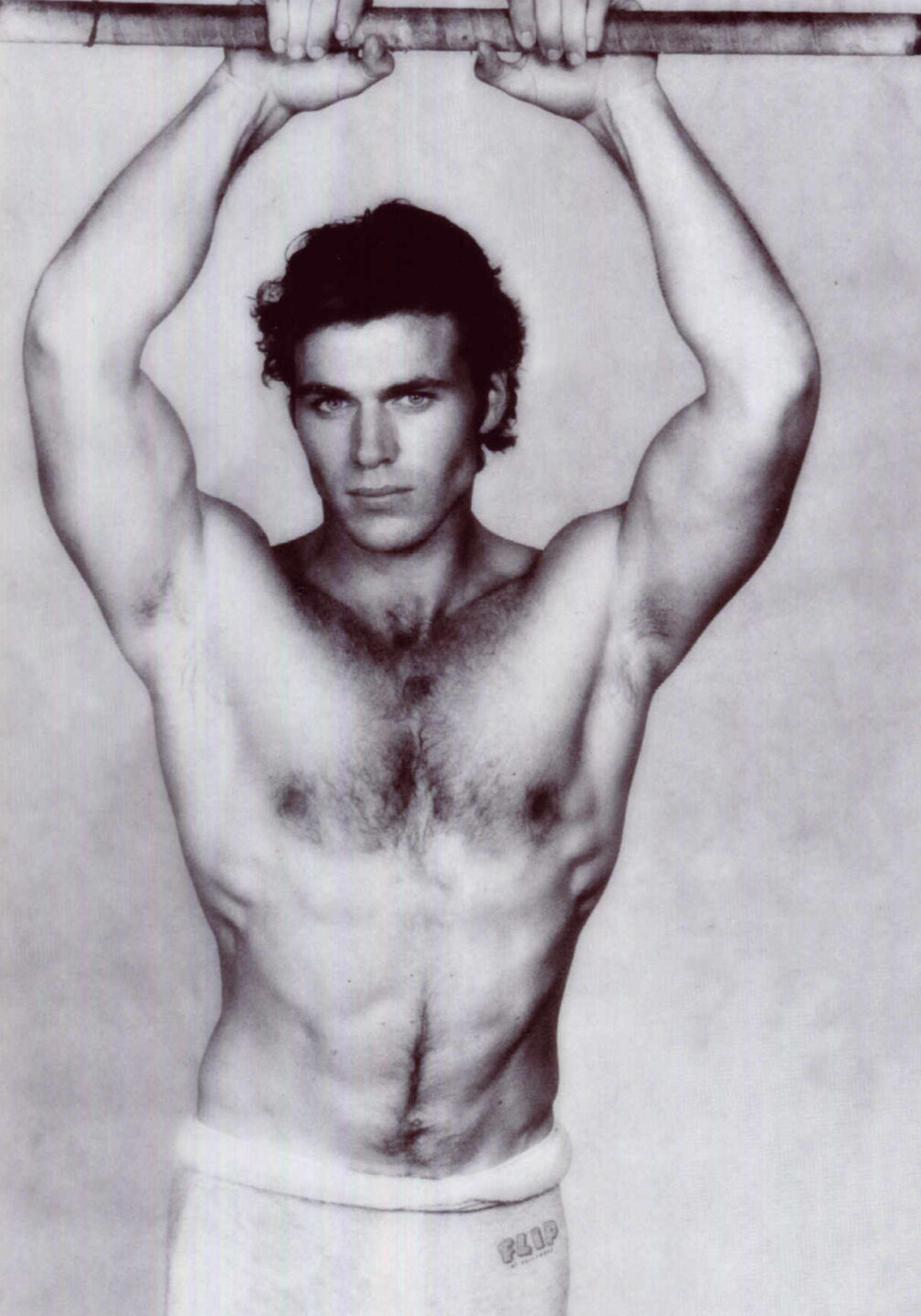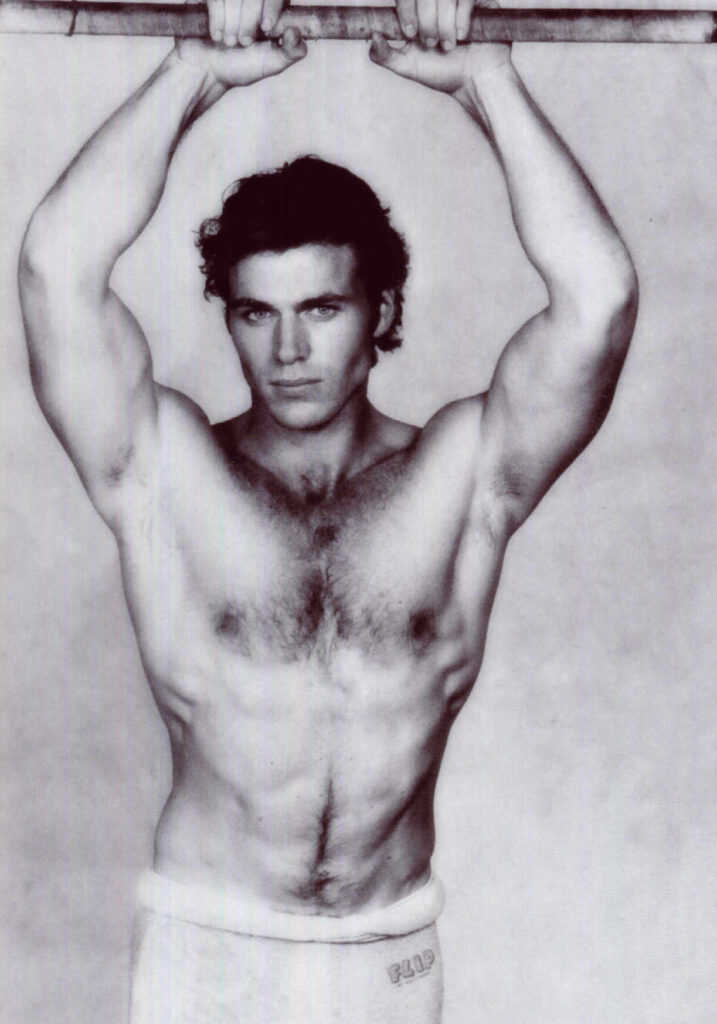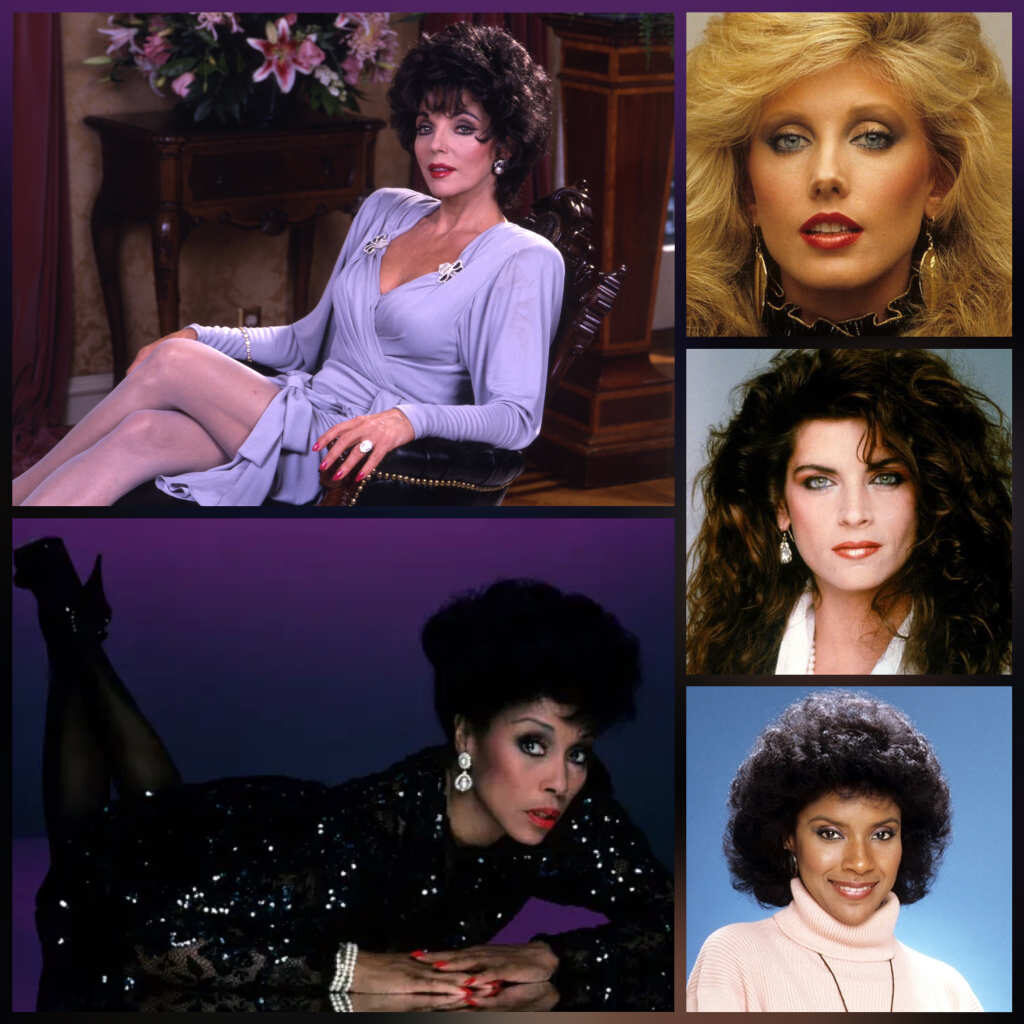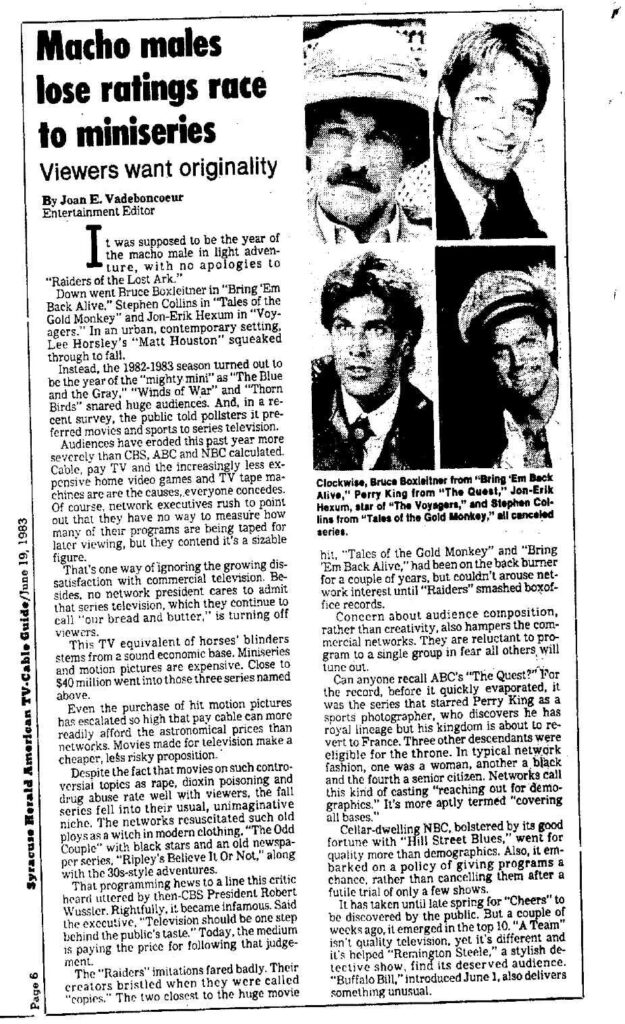Bring on the Men!
Jon-Erik addressed gender demographics a few times during Voyagers! (1982) run. – “We’ve also found we have a fair amount of moms watching, but for some reason, the demographics for men are zero, and we don’t know why. That’s another thing that’s really killing us.”
Perhaps Jon-Erik doth protested too much. Looking at him, it’s not hard to see why most viewers were moms and young women. Phineas Bogg and his sparkling blue eyes, deep bass voice, and muscled hairy chest chased most adult heterosexual men away from the TV sets.
In the 1970s, most leading men on TV looked like the average male off-screen – bald or balding, paunchy, and lacking big muscle power. They also came off as impish, odd, and unusual. Compare big TV stars like Telly Savalas from Kojak (1973) and Robin Williams of Mork and Mindy (1978). One character was odd. One was impish. For every James Garner and Lee Majors from The Rockford Files (1974) and The Six Million Dollar Man (1973), there was a Peter Falk and Jack Klugman winning hearts on Columbo (1968) and Quincy, M.E. (1976).
In 1982 NBC exec Joel Thurm called it “The heyday of the average guy. The country was prosperous. People were relatively satisfied with their lives and could laugh at themselves more. Now were’s looking for heroes again. We want fantasy and glamour.”
Men no longer got their TV “cheesecake” “fix.” The days of gorgeous women kicking butt in tight bell bottoms and occasionally low-cut blouses on Charlie’s Angels (1976) and Bionic Woman (1976) or lovely Lynda Carter’s heroic spins and the star-spangled underwear on Wonder Woman (1975) were nearly over.
In the 1980s, more women entered the corporate workplace, and power suits, shoulder pads, and glamorous evening gowns cropped up on TV shows. They were worn by assertive, beautiful women who took charge and earned wealth on their own terms. But what happened to the men?
“The sexual content of the new shows is relegated solely to the comeback of the macho man.” Joel Thurm said. “The glut of stud stars in the numerous action-adventure shows is clearly aimed at sending a few female hormones raging. But male sexuality is always presented with a bit more subtlety on TV than female sexuality.”
By the early ’80s, the network TV shows trotted out a line of “beefcake” – the male equivalent of “cheesecake,” attracting both women and men. When it came to Voyagers! (1982); however, a handsome man and smart-aleck boy solving historical problems don’t entice viewers with high sex appeal.
Thurm spoke candidly about the new direction for TV networks. “Male sex stars going shirtless or tight-jeaned almost never raise the hackles of the moralists the way females in skimpy attire do. Men are men, after all. Women are symbols – to the moral forces, that is. There is simply nothing new on TV that remotely resembles a “Charlie’s Angels” or even a “Three’s Company.” The only thing that will jiggle on this schedule is Tom Selleck’s mustache.”
The “moral forces” may not have taken issue with a man’s bronzed chest or tight jeans. Still, the action and danger these rugged men got themselves into sounded the alarm for TV violence. The media watchdogs turned their attention to that.
NBC developed the peacock feathers for their network emblem in 1956. In her column, entertainment Journalist Liz Smith wrote that Jon-Erik Hexum was a “Sacrificial Peacock.”
“I suppose NBC is making a sacrifice out of Jon-Erik Hexum, star of the new series, “The Voyagers.” [sic]. Because they’ve thrown the show into the boiling time slot opposite the unbeatable “60 Minutes.” But if you should ever get a look at Hexum, who is 6’2, 23 years old, and has turquoise eyes (I’m not kidding), then you just might be tempted to touch that dial in the future.”
The Rise of the Macho Hero
Between 1982-83, the media focused on the swift rise of heroic macho men on television. It was beyond trendy to feature broad-shouldered and hairy, bare-chested men. Actor Bruce Boxleitner stated, “I think we need heroes desperately again, given the state of the world. I rather like being a hero.”
Hollywood Power Broker and Movie-TV dealmaker Jay Bernstein compared viewership with socio-economics. His thoughts weren’t off-base for the viewing habits of the ’70s and ’80s audiences. “In good times when everyone is employed, and the economy is booming, Americans enjoy movies and TV shows involving social problems starring ethnic types in character leads.”
“In bad times such as these, audiences have enough problems of their own. They don’t want to think. They look for handsome, macho males who can handle any problem that comes along. They want entertainment. Escapism.”
The Philosophic Concept of the good-looking macho leading man is as simple as the father figure, big brother, or strong lover who helps you overcome your weak times. They represent men who can solve problems and project optimism.
The concepts of a reliable helper through weak times are fundamental regardless of race or ethnicity. They still play out in American television and movies, with some pertinent tweaks for the current generation. Today there’s considerable raging hostility against what’s known as the “Patriarchy” and “Straight White Males.” Hollywood latched onto that resentment, attempting to make up for their past sins by casting actors with a wide diversity of races in leading roles. Women also inhabit yesteryear’s leading “macho” roles more than ever.









I Love Your Website….Keep up the Great Work! It is deeply appreciated.
Had enjoyed reading the article from the Syracuse newspaper. Television audiences, can be so flicky!
Hi Fred. Thank you for commenting! I apologize for replying late. I have plenty more articles to share. To this day audiences are very fickle!